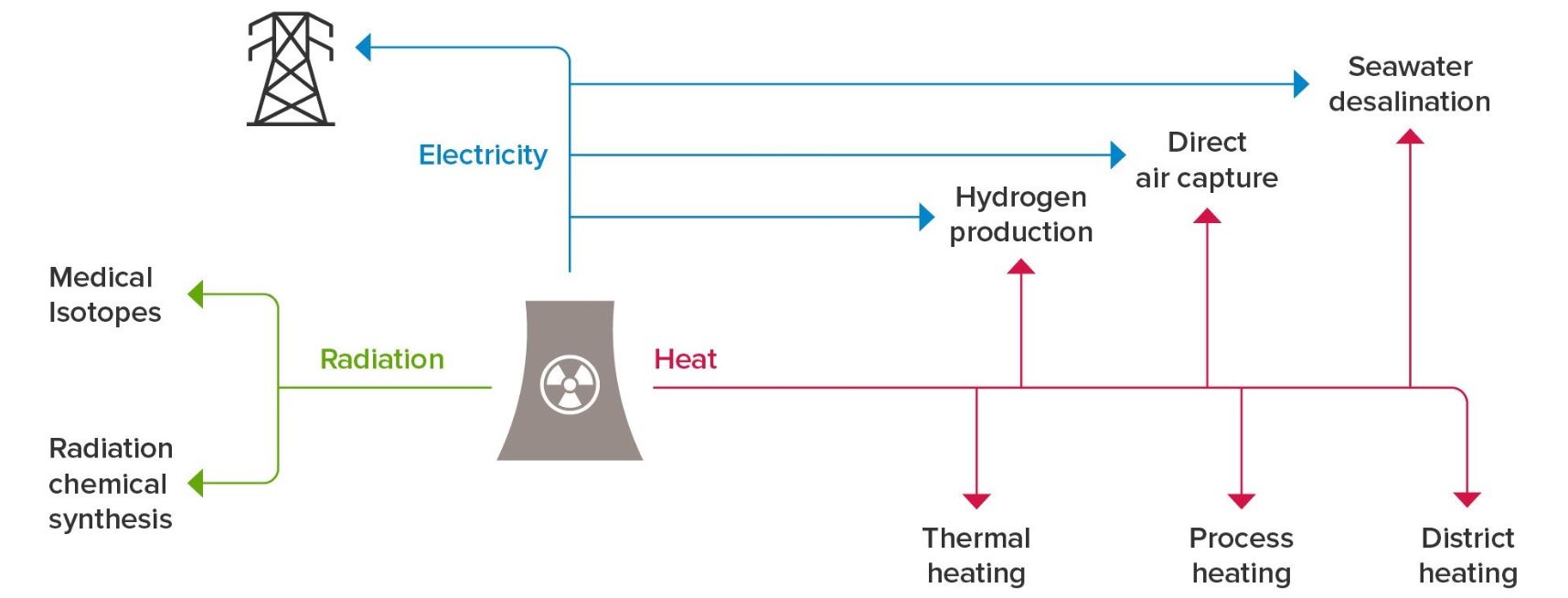Nuclear Cogeneration: civil nuclear in a low-carbon future
This policy briefing considers how the use of nuclear energy could be expanded to make the most of the energy produced
This policy briefing considers how the use of nuclear energy could be expanded to make the most of the energy produced and also to have the flexibility to complement an energy system with a growing input of intermittent renewable energy.
What is nuclear cogeneration?
Nuclear cogeneration is where the heat generated by a nuclear power station is used not only to generate electricity, but to address some of the ‘difficult to decarbonise’ energy demands such as domestic heating and hydrogen production. It also enables a nuclear plant to be used more flexibly, by switching between electricity generation and cogeneration applications.
Applications for nuclear cogeneration
Heat generated by civil nuclear reactors can be extracted at two different points for applications requiring either low-temperature or high-temperature heat. Each application differs in many aspects of operation and have different challenges.
Low-temperature cogeneration
Applications for the lower temperature ‘waste’ heat include:
- District heating
- Seawater desalination
- Low-temperature industrial process heating
High-temperature cogeneration
Higher temperature heat can be accessed earlier and used for:
- High-temperature industrial process heating
- Hydrogen production
- Sustainable synthetic fuel production
- Direct air capture
- Thermal energy storage
Challenges of cogeneration systems
Whilst some nuclear cogeneration applications have been employed in many countries, the economic benefit of widescale nuclear cogeneration needs to be determined. However, if the construction cost reductions for small modular reactors (SMRs) can be realised and the regulation and licencing processes streamlined, then the additional revenue benefits of cogeneration could be material for SMRs and for the future of nuclear generation in the UK.
Other outstanding issues include the ownership of reactors, the future demand for hydrogen and other cogeneration products at a regional, national and international level, and the cost of carbon and dependable power.

A range of options for nuclear cogeneration exist, using heat from the power station
